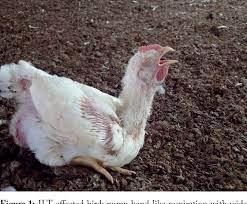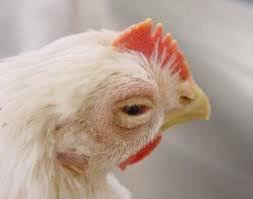
Dr. Maricarmen Garcia |
In a recent webinar under the auspices of the American Association of Avian Pathologists, Dr. Maricarmen Garcia of the University of Georgia reviewed changes in the epidemiology of infectious laryngotracheitis (ILT). Since the disease is caused by a herpesvirus, infected flocks remain shedders of the virus with persistence in the environment of houses after an affected flock has been depleted.
In past decades, most clinical outbreaks were attributed to the use of chick embryo origin (CEO) ILT vaccine that reverts to virulence. More recently, the G6 field strain has emerged demonstrating increasing virulence. According to Dr. Garcia, infection of SPF leghorn pullets with a G6 strain isolated in 2014 resulted in 30 percent mortality. In chicken receiving G6 virus isolated in 2022, none of the infected birds survived.
EGG-NEWS previously raised the question of a possible co-pathogen involved in outbreaks of coryza characterized by high mortality. There is evidence that the prevalent strain of coryza associated with outbreaks in the Midwest and California in recent years is similar to decades old isolates when subjected to whole genome sequencing. It was previously suggested in CHICK-NEWS that emerging avian metapneumovirus may have been a co-factor exacerbating clinical signs including a precipitous drop in production and high mortality, not characteristic of conventional coryza. ILT should now be considered as a possible co-factor and accordingly attempts at isolation and identification of G6 from flocks at an early stage of a coryza outbreak should be considered to determine if other than a vaccine strain of ILT was present.

Classic gasping with ILT |
HVT-vectored ILT and IBD vaccines are now used extensively to immunize replace pullet flocks. Experience has shown that clinical signs of ILT occur in flocks vaccinated either in ovo or at day-old. Accordingly, producers are administering either a tissue culture origin or a chick embryo origin ILT vaccine at 7 to 10 weeks by the intraocular route when birds are handled for administration of epidemic tremor, pox and pasteurellosis vaccines.
|

Periocular swelling with conjunctivitis and
lachrymation has a broad differential diagnosis
|
Biosecurity and vaccination are the only modalities available to producers to suppress ILT. With multi-aged complexes, solid immunity against ILT is a necessity due to the carrier state. Implicit in the prevention of viral disease is the unsettling realization that if small contract and organic farms cannot exclude ILT they will also not be able to prevent introduction of HPAI.